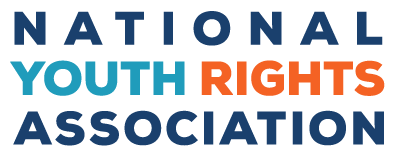Tom from SSDP gave me a head’s up about an excellent op-ed in the New York Times today written by Anya Kamenetz. She basically makes the Epstein argument that we should create competency tests to grant rights to youth younger and in a more flexible fashion. Specifically she mentions voting, drinking, and credit card ownership, but it seems she is interested in the whole list of adult rights that youth are currently denied. I am very intrigued and supportive.
A snippet:
We should hasten the enfranchisement of this generation, born between 1980 and 1995, by lowering the voting age to 16.
Age thresholds are meant to bring an impartial data point to bear on insoluble moral questions: who can be legally executed, who can die in Iraq, who can operate the meat cutter at the local sub shop. But in a time when both youth and age are being extended, these dividing lines are increasingly inadequate.
Legal age requirements should never stand alone. They should be flexible and pragmatic and paired with educational and cognitive requirements for the exercise of legal maturity.
Great to see youth rights again splash across the NY Times editorial page. We were last there (unless I missed something) in September with Mike Male’s great op-ed about adult drug use. Ironically, Mike might have a problem with Anya’s op-ed actually. Beyond his general skepticism about competency tests in general (NYRA is neutral on them) I’m sure he’ll take issue with this bit:
Driving laws provide the best model for combining early beginnings and mandatory education. Many states have had success with a gradual phasing in of driving rights over a year or more, starting with a learner’s permit at age 16. The most restrictive of these programs are associated with a 38 percent reduction in fatal crashes among the youngest drivers, according to a study conducted by the AAA Foundation for Traffic Safety.
According to Mike’s own study into the effectiveness of the graduated drivers licensing program in California he found that it actually hurt overall traffic safety. Most studies that rate the effectiveness of graduated driver’s license programs (and most all teen related stats) look only at teens and forget that teens are not an insular demographic. These studies focus exclusively on whether 16 and 17 year olds are helped by graduated driver’s licenses. Males was curious whether going through such a program actually made people better drivers once they exit the program and turn 18. What he found is quite interesting:
Is California’s teen-driver law — the nation’s strictest and touted by safety experts as a national model — really hazardous for the state’s teen drivers?
A study I conducted raises that possibility. Published in the National Safety Council’s Journal of Safety Research, it found, as did previous researchers, that California’s graduated licensing law was associated with fewer fatalities among 16-year-old drivers (down 20% through 2005). But that reduction was more than offset by the increased death rate — up 24% — of 18-year-olds, whose driving records researchers have neglected to study. The latest figures also indicate higher-than-expected fatalities among drivers aged 19, 20 and 21 who were licensed under the new law. The death rates of 17-year-olds changed little.
I e-mailed Males about Kamenetz’s op-ed, so I’m sure he’ll go educate her.
Kamenetz seems like a good ally to have though. I’ll be sure to add a link to Anya’s blog from One and Four and Age of Reason. Jason is putting together a youth rights meet up in NYC next month, maybe we can convince her to show up. I’ll open communications with her in a bit. Just need to find her e-mail.
Yay youth rights!





